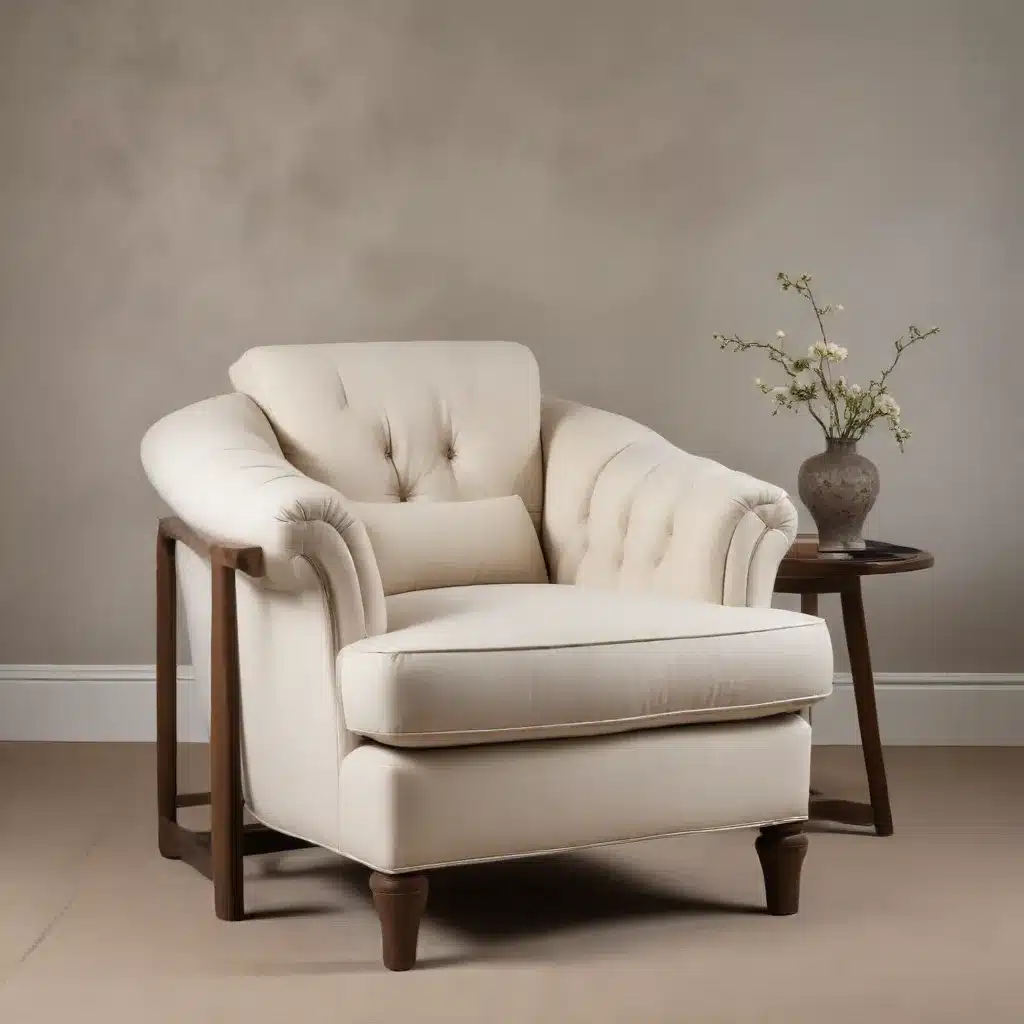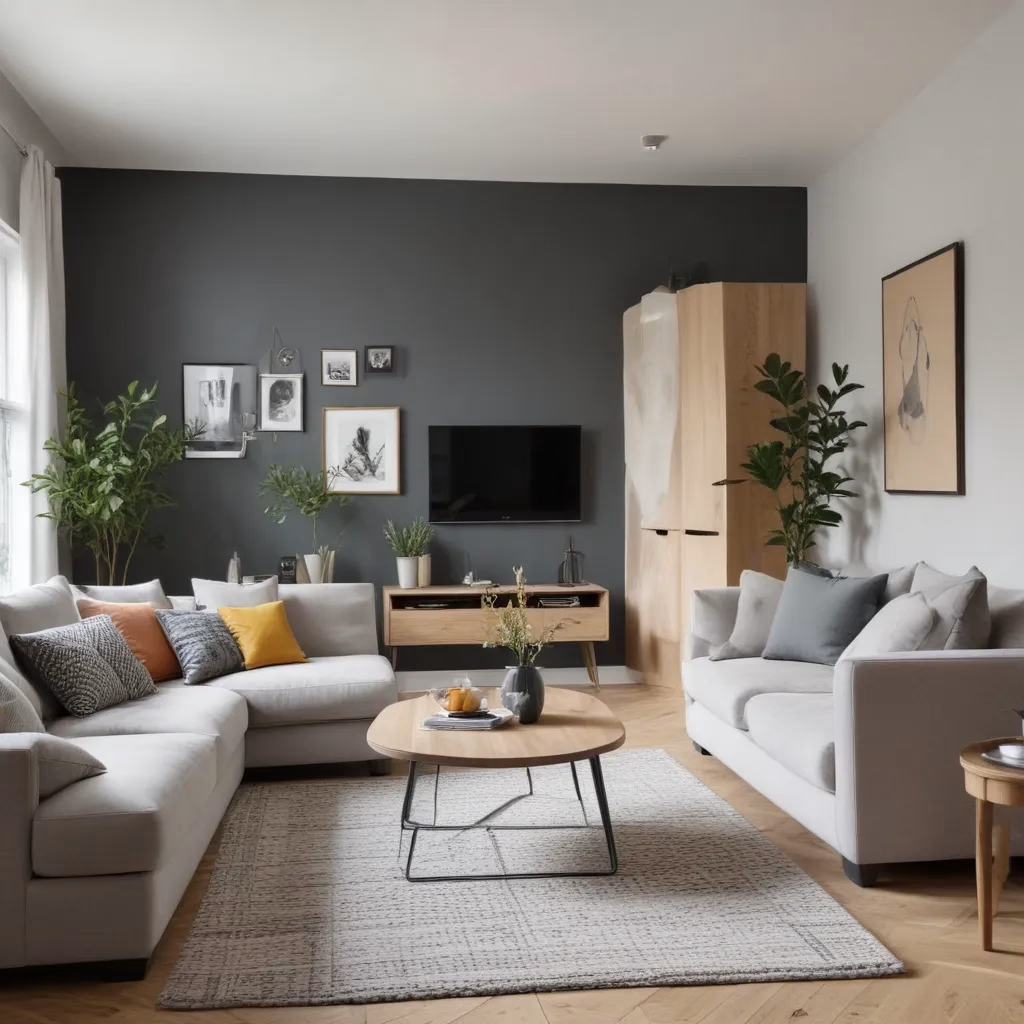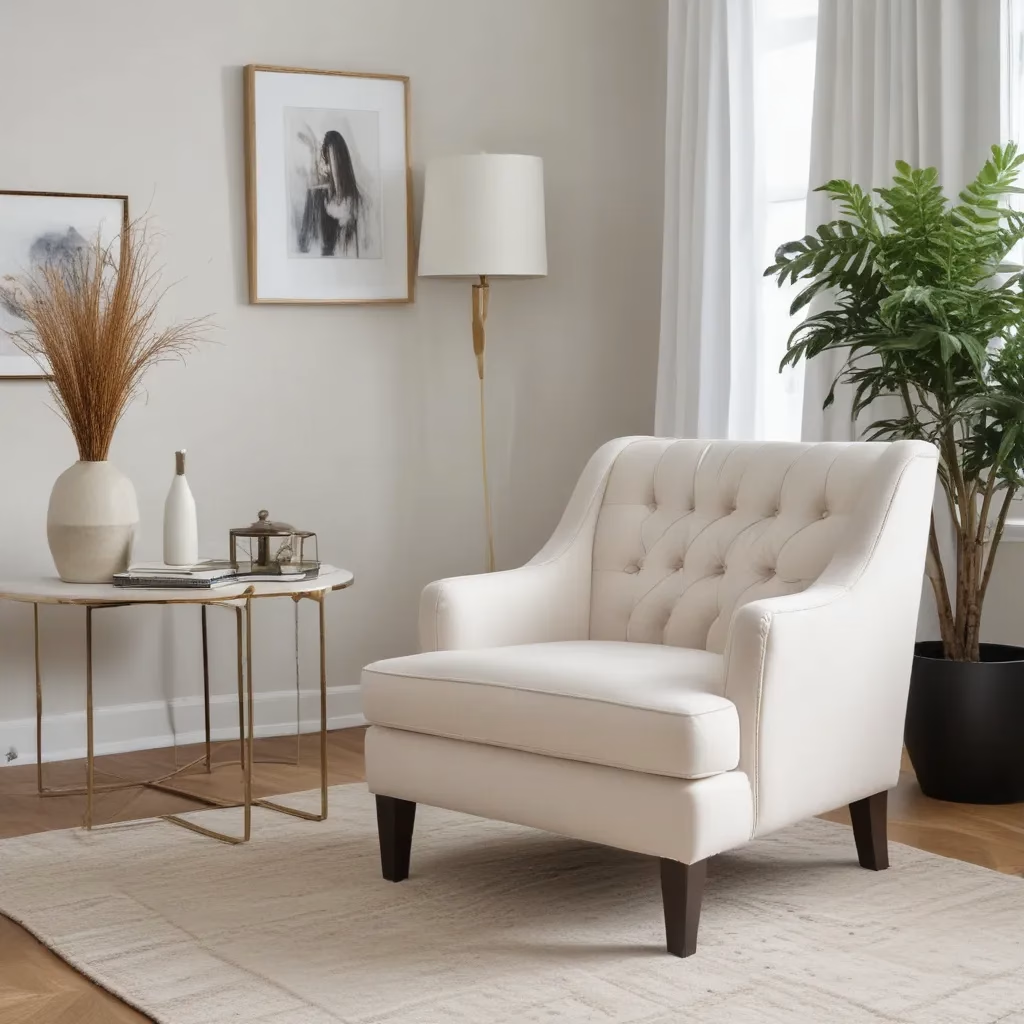
The Art of Sofa Selection
As a furniture specialist with years of experience, I’ve come to appreciate the subtle nuances that make a sofa not just a piece of furniture, but a centerpiece of comfort and style in any home. Selecting the perfect sofa is an art form, one that requires a keen eye for design and a deep understanding of functionality.
When I first started in this industry, I naively thought that all sofas were created equal. How wrong I was! Over time, I’ve learned that the perfect sofa is a harmonious blend of form and function, a delicate balance between aesthetic appeal and practical comfort.
One of the first things I always tell my clients is to consider the room where the sofa will reside. The space dictates so much about the sofa you should choose. A grand, sprawling sectional might be perfect for a spacious living room, but it would overwhelm a cozy den. Conversely, a petite loveseat that looks charming in a small apartment might seem lost in a large, open-plan living area.
Upholstery: The Skin of Comfort
The choice of upholstery is crucial in sofa selection. It’s not just about color and pattern, though these are important. The texture and durability of the fabric play a significant role in both the look and longevity of your sofa.
I remember working with a young couple who were adamant about having a white linen sofa. They loved the crisp, clean look it provided. However, knowing they had two large dogs and were planning to start a family soon, I gently steered them towards a more practical option. We ended up choosing a beautiful, textured fabric in a warm beige tone that was not only stain-resistant but also had a subtle pattern that would help hide any potential marks.
Leather is another popular option, and for good reason. It’s durable, easy to clean, and ages beautifully. But it’s not for everyone. I once had a client who was set on a leather sofa until she sat on one in the showroom and realized she didn’t like the feel against her skin. This experience taught me the importance of having clients interact with different materials before making a decision.
The Framework of Comfort
While the exterior of a sofa is what catches the eye, it’s the interior framework that determines its comfort and longevity. A well-constructed sofa frame is like the foundation of a house – if it’s not solid, nothing else matters.
I always advise my clients to invest in sofas with hardwood frames. Softwoods might be cheaper, but they’re also more prone to warping and breaking over time. A sofa with a solid hardwood frame, preferably kiln-dried to prevent warping, will last for years, even decades, with proper care.
The suspension system is another crucial element. Eight-way hand-tied springs are often considered the gold standard, providing even support and preventing sagging. However, high-quality sinuous spring systems can also offer excellent support and comfort at a lower price point.
Cushion Talk: The Heart of Relaxation
Cushions are where comfort meets science. The filling of your sofa cushions can make the difference between a sofa that’s comfortable for an hour and one you can lounge on all day.
High-density foam is a popular choice for its firm support and ability to retain its shape. However, it can feel a bit stiff for some. I often recommend a combination of foam and down for the perfect balance of support and softness.
I once worked with a client who suffered from back pain. We chose a sofa with high-density foam cushions wrapped in a layer of soft fiber for added comfort. The result was a sofa that provided the firm support she needed while still feeling invitingly soft.
Design Trends: A Personal Touch
While comfort and durability are paramount, the aesthetic appeal of a sofa can’t be overlooked. After all, it’s often the focal point of a room. Current trends lean towards clean lines and neutral colors, but that doesn’t mean your sofa has to be boring.
I encourage my clients to think of their sofa as a canvas. A neutral-colored sofa can be dressed up with colorful throw pillows and blankets, allowing for easy updates as tastes change or seasons shift. For those who are more daring, a bold-colored or patterned sofa can become a true statement piece.
One trend I’m particularly fond of is the return of curved sofas. They add a softness to rooms that are often dominated by straight lines and right angles. Plus, they’re great for encouraging conversation in social settings.
The Importance of Proper Maintenance
Once you’ve selected the perfect sofa, maintaining it properly is key to ensuring its longevity. Regular vacuuming is essential, even for leather sofas. For fabric sofas, I recommend professional cleaning at least once a year, more often for high-traffic homes or those with pets.
Rotating cushions regularly helps prevent uneven wear, and using arm covers can protect high-wear areas. For leather sofas, conditioning every 6-12 months helps keep the leather supple and prevents cracking.
I once had a client who was devastated when her cat scratched her new leather sofa. We were able to repair the damage with a leather repair kit, but it taught me the importance of educating clients on proper care and potential risks.
The Personal Touch: Custom Sofas
For those who want something truly unique, custom sofas are an excellent option. While they can be more expensive, they allow for complete personalization in terms of size, shape, and materials.
I worked with a tall client who struggled to find a sofa deep enough for him to sit comfortably. We designed a custom sofa with an extra-deep seat and slightly higher back. The result was a piece that not only fit him perfectly but also looked proportional in his space.
Custom sofas also allow for the use of unique fabrics or combinations of materials that you won’t find in store-bought options. It’s a chance to create a truly one-of-a-kind piece that reflects your personal style.
The Environmental Aspect
In recent years, I’ve seen a growing interest in eco-friendly furniture options. Many of my clients are now asking about sustainable materials and manufacturing processes.
There are some fantastic options available, from sofas made with recycled materials to those constructed using sustainably sourced wood. Some manufacturers are even using organic fabrics and non-toxic dyes.
One of my favorite eco-friendly options is reclaimed wood for sofa frames. Not only is it sustainable, but each piece has a unique character and history. I once sourced a sofa made with wood from an old barn – the client loved knowing her furniture had a story behind it.
Space Planning: The Bigger Picture
Choosing a sofa isn’t just about the piece itself, but how it fits into the overall room design. I always encourage my clients to think about traffic flow and how the sofa will interact with other pieces of furniture.
In smaller spaces, multifunctional sofas can be a game-changer. Sofa beds or storage sofas can help maximize space without sacrificing style. I once worked on a studio apartment where we used a compact sofa bed with built-in storage. It served as seating during the day, a bed at night, and extra storage space – all while looking chic and modern.
For larger spaces, consider how the sofa will create conversation areas. L-shaped sectionals can help define spaces in open-plan living areas, while a pair of sofas facing each other can create an intimate seating area in a large room.
The Psychology of Color in Sofa Selection
Color psychology plays a significant role in sofa selection, often more than people realize. The color of your sofa can affect the mood of the entire room.
Blue tones, for example, are often associated with calmness and serenity. I’ve used blue sofas in bedrooms and studies to create a peaceful atmosphere. On the other hand, red or orange sofas can bring energy and vibrancy to a space – perfect for social areas like living rooms.
Neutral colors like beige, gray, or white are popular for their versatility, but they’re not without their psychological effects. These colors can create a sense of spaciousness and calmness, but they need to be balanced with other elements to prevent the room from feeling sterile.
I once worked with a client who was struggling with depression. We chose a sofa in a soft, warm yellow – a color associated with happiness and optimism. While a sofa color certainly can’t cure depression, she did report that the bright, cheerful piece helped lift her mood when she was at home.
The Technology Integration in Modern Sofas
As our homes become smarter, so do our sofas. Many modern sofas now come with built-in USB ports and power outlets, allowing you to easily charge your devices while relaxing.
Some high-end models even include features like built-in speakers, adjustable headrests, and app-controlled reclining functions. While these features can be convenient, I always advise my clients to consider whether they’ll actually use them before investing in a tech-heavy sofa.
One of my clients, a tech enthusiast, was thrilled with a sofa that had built-in massage functions and a wireless charging pad. For him, it was the perfect blend of comfort and technology.
The Art of Mixing and Matching
Gone are the days when all your living room furniture had to match perfectly. Today, mixing and matching different styles can create a more interesting and personalized space.
I often advise clients to choose a neutral sofa and pair it with more colorful or patterned accent chairs. This allows for more flexibility in changing up the room’s look over time.
Another approach is to mix different textures. A leather sofa can be beautifully complemented by fabric armchairs, adding depth and interest to the room.
I once worked on a project where we paired a sleek, modern sofa with vintage armchairs. The contrast created a unique, eclectic look that perfectly reflected the client’s personality.
The Importance of Testing Before Buying
No matter how beautiful a sofa looks, the true test is in how it feels when you sit on it. I always encourage my clients to spend time actually sitting, lying, and even napping on a sofa before making a purchase.
Everyone’s idea of comfort is different. Some prefer a firm seat, while others like to sink into soft cushions. By testing out different options, you can find the sofa that best suits your personal comfort preferences.
I remember a client who was set on a particular sofa based on its looks. However, after spending some time sitting on it, she realized it wasn’t comfortable for her. We ended up choosing a different model that may not have been her first choice aesthetically, but provided the comfort she needed for long movie marathons.
The Role of Sofas in Different Cultures
It’s fascinating to see how the role and design of sofas vary across different cultures. In some countries, low-seated floor sofas are popular, while in others, formal, upright sofas are the norm.
Understanding these cultural differences can be particularly important when designing spaces for clients from diverse backgrounds. I once worked with a Middle Eastern family who preferred low, cushioned seating for their living room. We ended up creating a custom sofa inspired by traditional Arabic majlis seating, which perfectly suited their lifestyle and cultural preferences.
The Future of Sofa Design
As we look to the future, sofa design continues to evolve. There’s a growing focus on modularity and flexibility, with sofas that can be easily reconfigured to suit changing needs.
Sustainability is also becoming increasingly important, with more manufacturers looking at ways to create eco-friendly sofas without compromising on style or comfort.
I’m particularly excited about advancements in fabric technology. Stain-resistant, easy-clean fabrics are becoming more sophisticated, allowing for lighter colored sofas even in homes with children or pets.
As we continue to spend more time at home, I believe we’ll see a trend towards sofas that prioritize comfort without sacrificing style. The perfect balance of form and function will always be the holy grail of sofa design.
In conclusion, selecting the perfect sofa is a journey that involves considering numerous factors – from the practical aspects of size and durability to the more nuanced elements of style and comfort. As a furniture specialist, my role is to guide clients through this journey, helping them find a sofa that not only fits their space and lifestyle but also brings them joy every time they use it.
Whether you’re in the market for a new sofa or simply dreaming of future home improvements, I hope this insight into the world of sofa selection has been helpful. Remember, your perfect sofa is out there – it’s just a matter of finding it. And if you’re ever in need of expert advice, don’t hesitate to reach out to professionals like those at Sofa Spectacular. Happy sofa hunting!



